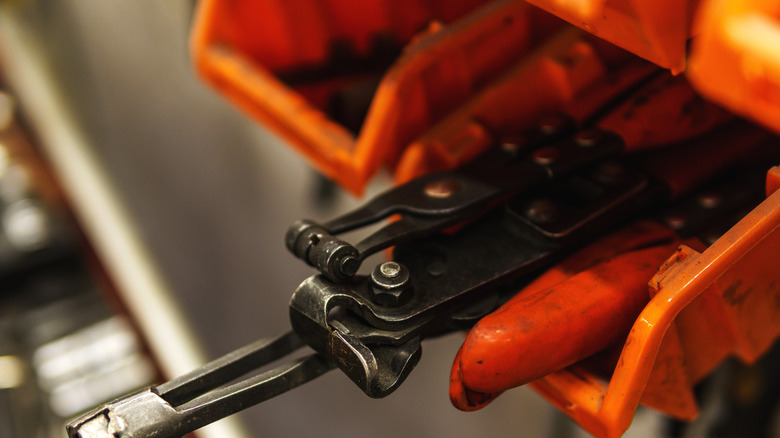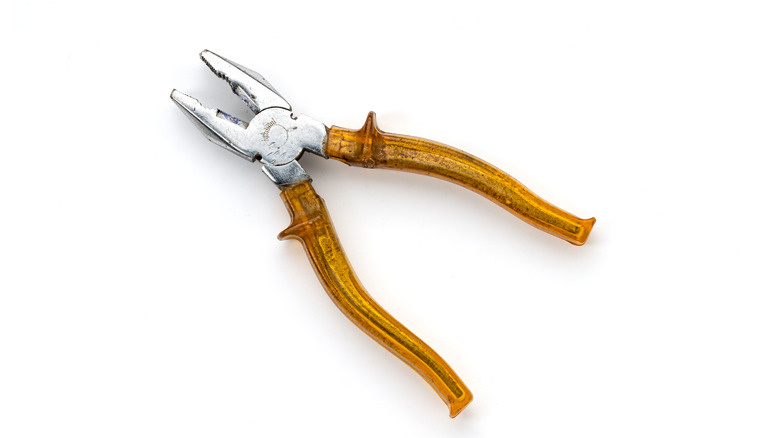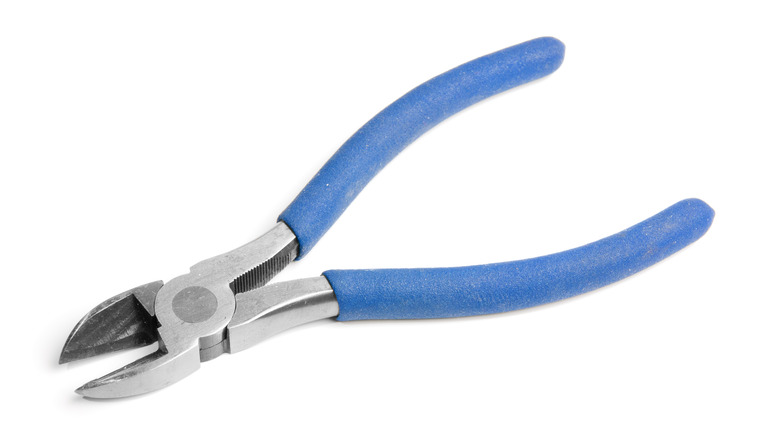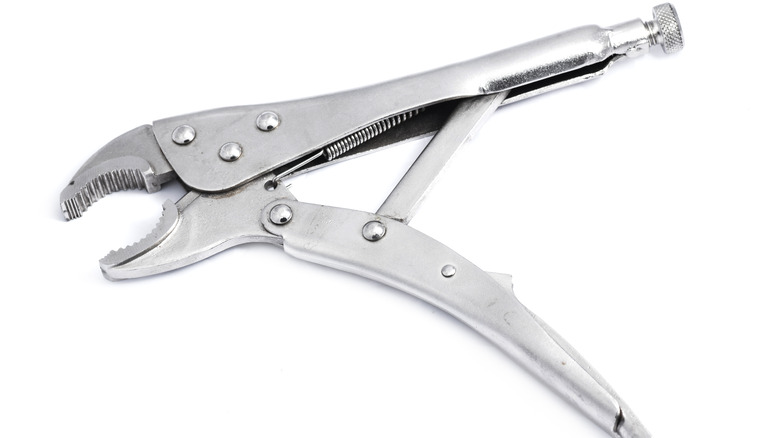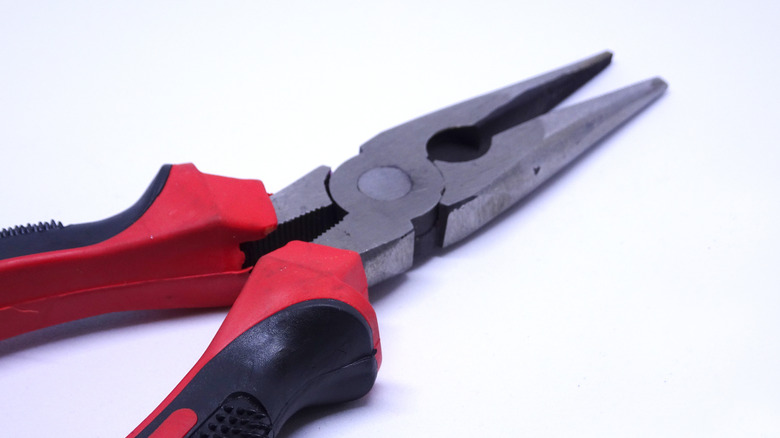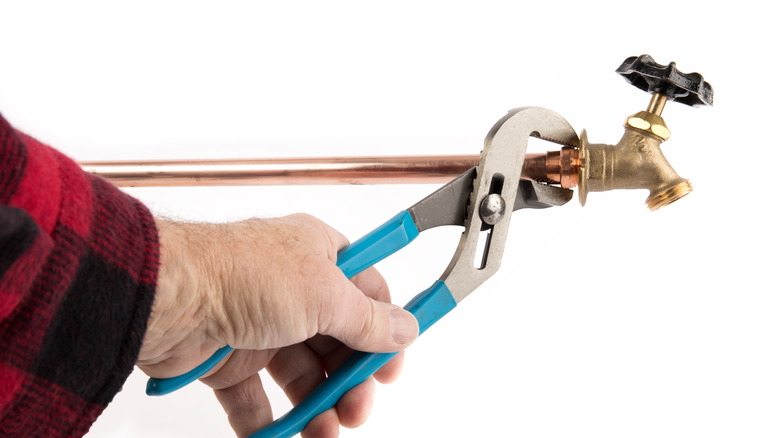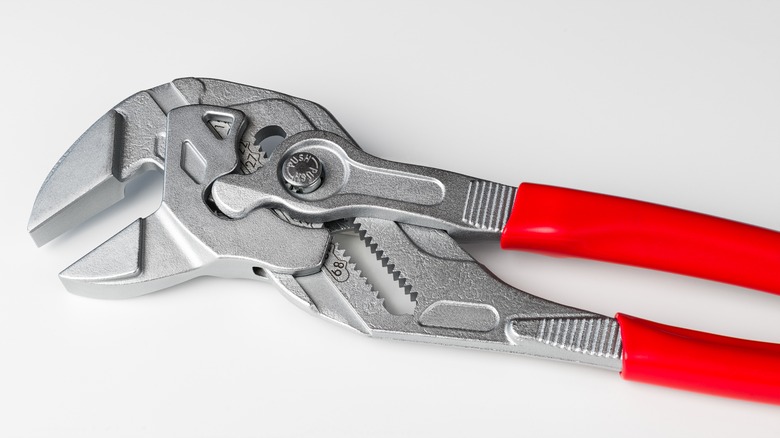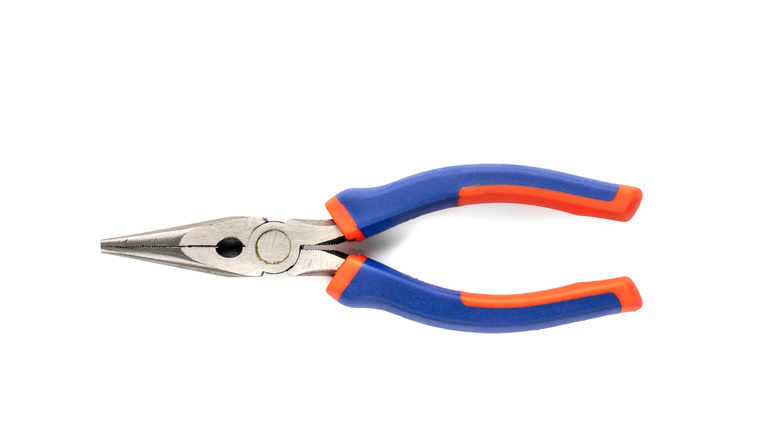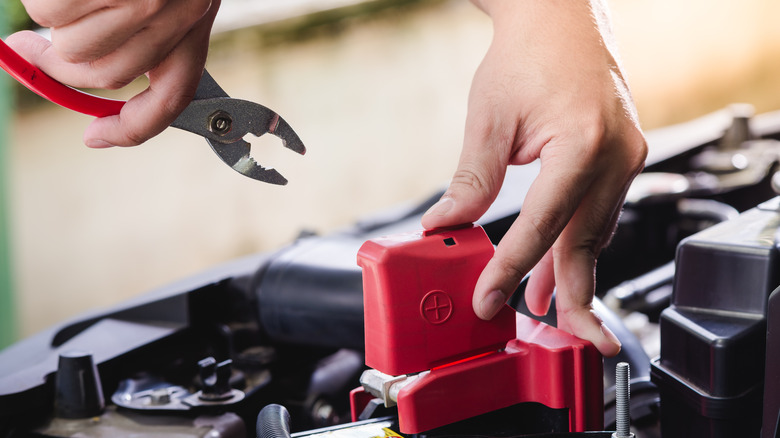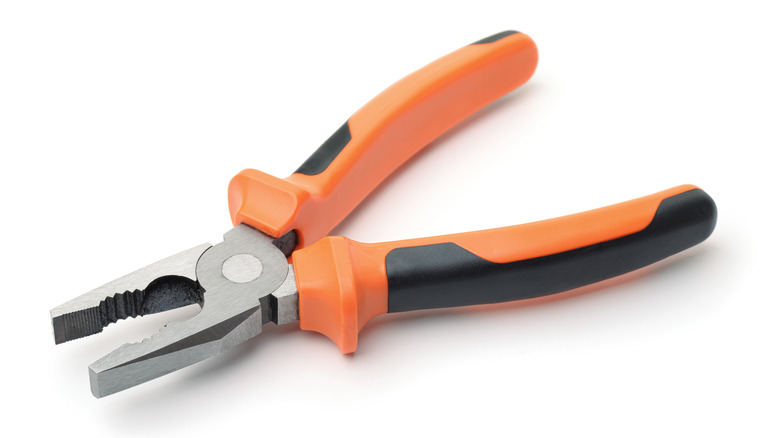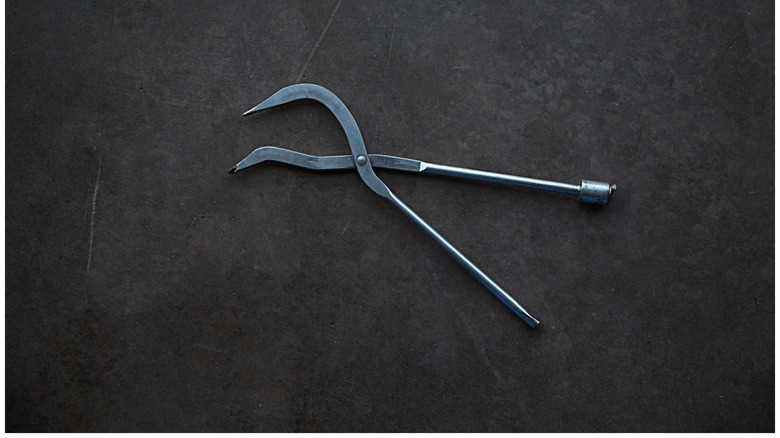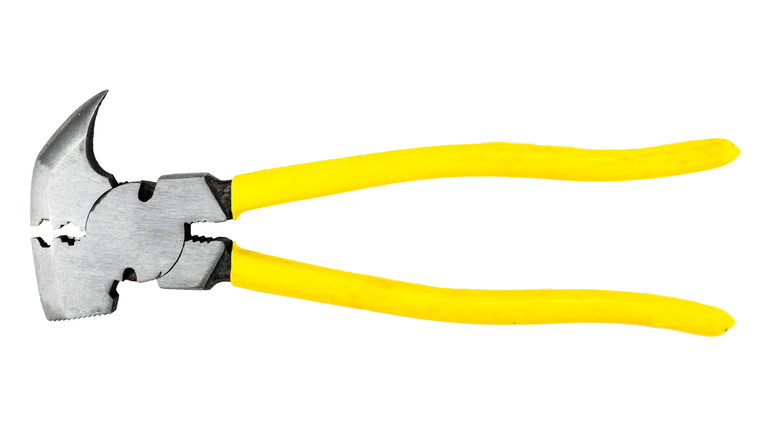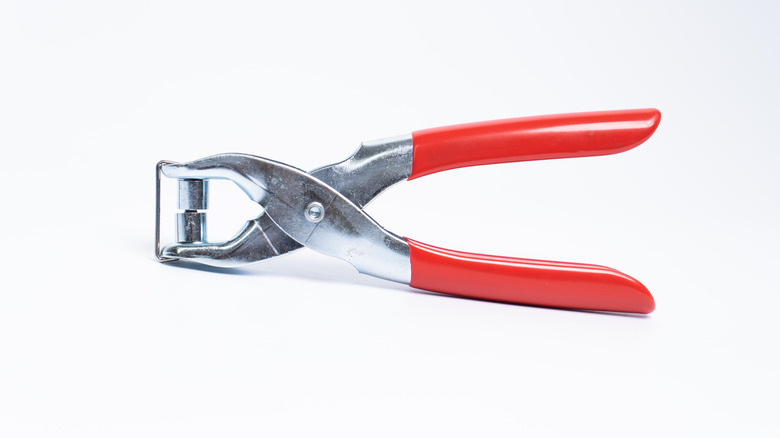15 Different Types Of Pliers Homeowners Should Know
There are so many different types of pliers that The Engineers Post categorized them into two: standard pliers and specialty pliers. Don't worry, you won't need them all. But as a homeowner who enjoys DIY, there are 15 that are sure to come in handy. We don't expect you to get these indispensable tools today; you can start your collection slowly, or purchase on an as-needed basis.
For this article, we have a few goals in mind, but the most important is to help make your maintenance and repair processes around the house less daunting. This is important because knowing the type of pliers which works best for a specific project and how to use them is crucial in working efficiently and effectively. In no time, you'll know which tool to grab to cut metals, pull wires, grip workpieces, reinforce holes, manipulate metals, and hold smaller components. Let's get started.
1. Hose clamp pliers
This hand tool is also known as radiator hose pliers or spring clamp pliers. Primarily, it's used to compress spring and hose clamps to make the joints tighter. There are a few designs on the market, each for different tasks, but the most popular features peg-shaped teeth at the tip of each jaw, which are used to pinch the clamps. The Drive assures that since its jaws swivel to access hose clamps in any position, hose clamp pliers work well with most ring-type or flat-band hose clamps.
2. Crimping pliers
Though crimping pliers are staples in the networking and telecommunications industry, we believe they're part of the types of pliers that every homeowner must have. You'll need these pliers if you want to crimp connectors onto wires or create a secure electrical connection between a wire and a terminal. You can also use it in DIY jewelry making, according to Clearly Helena. They smooth and curve all the sharp edges around your beads, making them comfortable to wear.
3. Linesman pliers
This is a specialty, multipurpose hand tool that electricians use to grip, twist, pull, straighten, push, and cut wires — but you can use it at home, too! Due to their versatility and jaw strength, these pliers are perfect for manipulating metals that are too tough for other pliers. If you're no stranger to DIY electrical work around the house, you'll find the insulated handles particularly helpful. Depending on the model, it can protect you from electrocution, says the Family Handyman.
4. Diagonal pliers
The types of pliers you should know as a homeowner include the diagonal pliers. They're fashioned from tempered steel and feature an angled edge that uses massive lever force to split small pieces of metal. They can cut through thick wires consisting of copper, brass, iron, steel, and aluminum. There are many sizes available, mostly between 140mm and 200mm. Per Wonkee Donkee Tools, the heavier the model, the more equipped it is to cut through thicker or harder wires.
5. Locking pliers
If your workpiece is unsteady, grab locking pliers to hold it firmly. These pliers are an adjustable hand-held tool that function as a vice and clamp, helping you to work with heat or fix small components into position. They also pull nails and staples, extract rounded nuts and bolts, crimp wire connectors, and suppress leaks, according to Tooled Up. To use a locking pliers, place the gripping mouth on the object and adjust. When it fits, squeeze the handles together until you hear a click.
6. Needle nose pliers
Every homeowner needs needle nose pliers or long-nose pliers in their toolbox. They're an excellent device, perfect for gripping, shaping, bending, and cutting wires. Needle-nose pliers offer curved handles for comfort and control and elongated noses with serrated teeth for precision. As David Darling points out, they're great for reaching tight spots on workpieces that are often inaccessible to the other types of pliers. Pro tip: Before purchasing in person, ensure that the jaws and cutting blades meet evenly.
7. Snap ring pliers
You may know these pliers as circlip pliers, retaining ring pliers, lock ring pliers, or c-clip pliers. Most people, especially bikers and vehicle owners, employ this hand tool when working on gears. Unlike other pliers, snap ring pliers have a uniquely designed tip that fits perfectly into the grip holes. That's why Tameson says they're excellent for installing, repositioning, manipulating, and removing snap rings. Since snap rings vary in size, it's always ideal to buy the right snap ring pliers.
8. Slip joint pliers
Slip joint pliers use a pin or rivet, instead of a fixed rivet at the fulcrum to connect both halves of the pliers. The pin employs a slipping motion, creating a wide opening at the jaw to allow a firm grip on your workpieces. These types of pliers offer flat, serrated teeth, making household tasks such as repairing a kitchen faucet and crimping metal effortless. If you want to replace a sink drain basket, install a hose, bend or straighten a small nail, or grasp smaller tools, grab a slip joint pliers, HowStuffWorks says.
9. Tongue and groove pliers
The jaws of these pliers are adjustable and set 45 to 60 degrees to the handles, creating a width that surpasses slip joint pliers. They consist of a jagged groove upper handle and a lower jaw which, depending on the size of your workpiece, can be locked into a variety of positions. Use a tongue and groove pliers for turning nuts and bolts, crimping metal, and gripping irregular-shaped objects. Note that these pliers are also known as channel locks or groove joint pliers, per Toolbarn.
10. Round nose pliers
Jewelers and bead makers often employ round nose pliers in their trade. They use them to clamp jewelry components as they adopt other types of pliers, such as the flat nose pliers, to perform other tasks. Round nose pliers are also used to wrap wire loops and thread beading cable back through crimp beads, Ring & Things says. You can recognize this hand-held tool by its curved handles, which form a round shape.
11. Battery pliers
According to The Engineers Post, you need these pliers for your battery and jumper cables if you own a vehicle. They were specifically designed for use in the automotive industry to grip the square-shaped bolts on battery terminals. When employed to service car batteries, the small, angled, serrated jaws of these pliers grip the bolts tightly without biting into the soft metal of the terminals. The standard battery pliers on the market features drop-forged steel and cushioned handles for a comfortable, secure grip.
12. Combination pliers
We are aware that it may be overwhelming to purchase all of the types of pliers at once, which is why we recommend starting with a combination pliers. These pliers are a multipurpose tool that you most certainly need in your house. They can bend, extract, twist, cut, compress, and grip a wide range of materials, according to TATA Steel. Combination pliers consist of plastic-coated handles for increased comfort and flat edges to provide a firm hold. They also have jagged jaws to create friction while gripping and blades to cut through tough wires and cables.
13. Brake spring pliers
Here's another set of automotive pliers that you need as a vehicle owner. Generally speaking, they're used to detach and replace the brake springs that are on most drum brakes. The standard brake spring pliers feature an alloy steel base and nickel or chrome-plated finish. They also have a unique set of jaws. The first is a large, rounded jaw that curves inwards — it's used to remove springs. The second, with the smaller curve, installs the springs, Simply Home Tips shows.
14. Fencing pliers
These pliers are one type of pliers that are a must-have. While they're odd-looking, resembling a hammer, they get the job done every time. Fencing pliers make it effortless to put up and maintain fences. They are a welcoming relief considering how cumbersome it can be to use a standard claw hammer. Per Bob Vila, you can use a fencing hammer for tensioning, splicing, cutting, twisting, and driving in or removing staples from your fence.
15. Grommet pliers
When we think of grommet pliers, heavy-duty hole punchers come to mind. They are typically used to make holes in a variety of fabrics. As a homeowner, you can use these pliers to punch fabrics and press grommets in shower curtains, tote bags, shoes, belts, canvas, tarps, tents, metals, equipment covers, and other materials. Here are the typical hole sizes grommet pliers make, according to Harbor Freight: 3/32 inches, 1/8 inches, 9/64 inches, 5/32 inches, 3/16 inches, and 7/32 inches.

